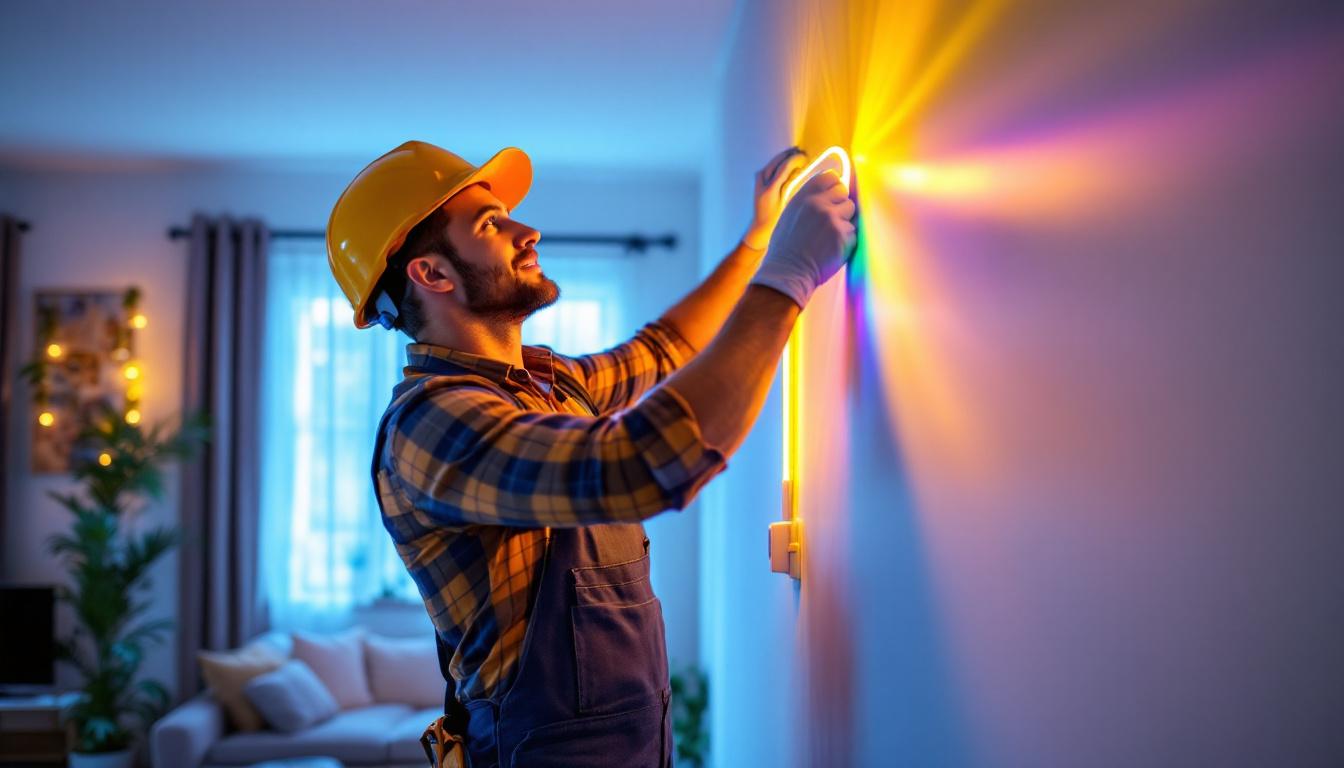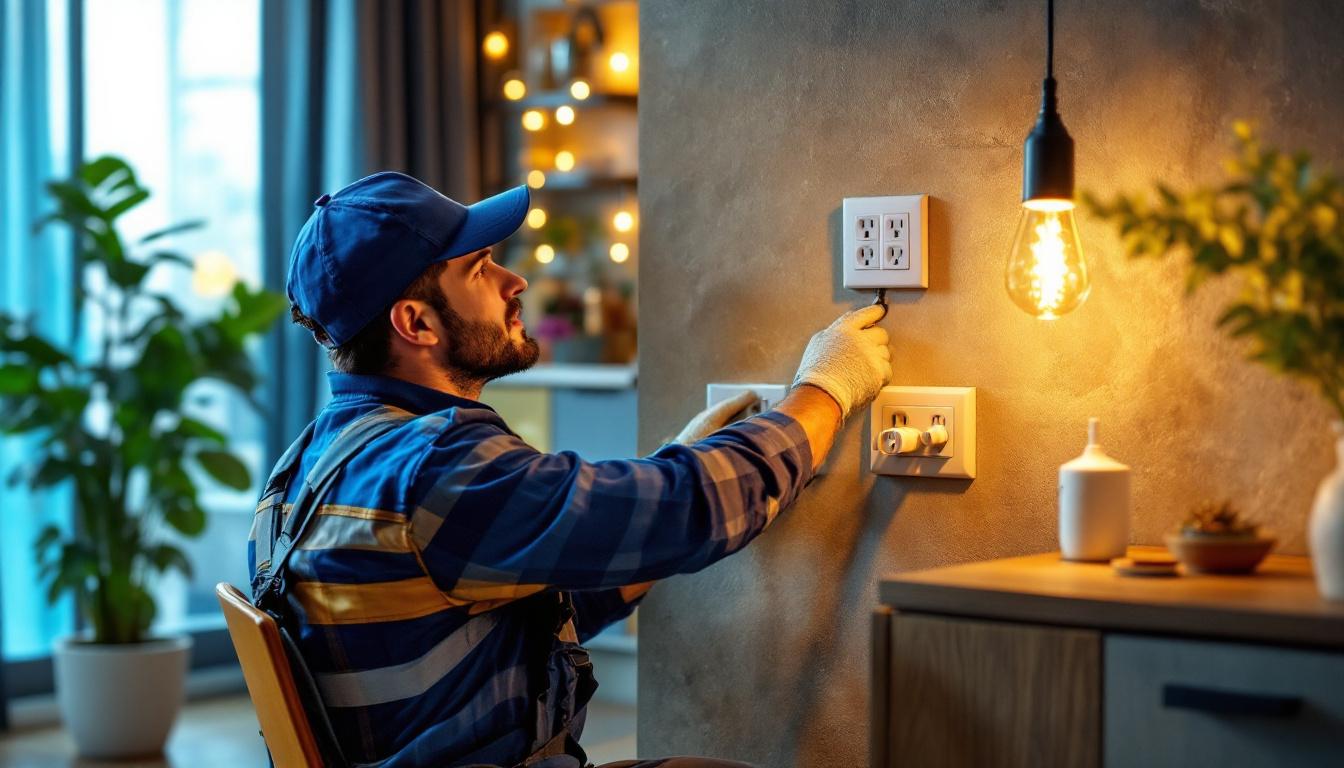
In the world of modern lighting solutions, plug-in LED light strips have emerged as a versatile and efficient option for both residential and commercial applications. For lighting contractors, understanding the intricacies of these products is essential to provide clients with the best solutions tailored to their specific needs. This article delves into the key aspects of plug-in LED light strips, including their benefits, installation considerations, and various applications.
Plug-in LED light strips are flexible circuit boards populated with light-emitting diodes (LEDs) that can be powered by a standard electrical outlet. These strips come in various lengths and can often be cut to fit specific spaces, making them an adaptable lighting solution. Their design allows for easy installation and customization, catering to a wide range of lighting needs. Whether you’re looking to illuminate a kitchen countertop, accentuate architectural features, or create a cozy atmosphere in your living room, these strips can be tailored to meet your vision.
Typically, these light strips are encased in a protective silicone or plastic coating, which enhances durability and can also contribute to waterproofing. This feature makes them suitable for both indoor and outdoor applications, provided they are rated for such use. For instance, outdoor-rated strips can be used to light up patios, gardens, or pathways, enhancing safety and aesthetics during nighttime gatherings. The flexibility of the strips also allows them to be installed in tight spaces or around corners, making them a versatile option for both residential and commercial projects.
Plug-in LED light strips offer several features that make them appealing to contractors and clients alike. One of the most notable aspects is their energy efficiency. Compared to traditional incandescent or fluorescent lighting, LED strips consume significantly less power, which translates to lower energy bills for end-users. This energy efficiency not only benefits homeowners but also contributes to a more sustainable environment, as LED technology reduces overall energy consumption and greenhouse gas emissions.
Additionally, these light strips are available in various color temperatures, ranging from warm white to cool daylight, allowing contractors to create the desired ambiance for any space. Many strips also come with features such as dimmability and color-changing capabilities, further enhancing their versatility. The ability to adjust brightness and color can transform a room’s mood, making it suitable for different occasions, from vibrant parties to serene evenings. Moreover, some advanced models can be controlled via smartphone apps or smart home systems, enabling users to seamlessly integrate their lighting with other smart devices for a fully connected home experience.
One of the primary advantages of plug-in LED light strips is their energy efficiency. LEDs convert a higher percentage of energy into light rather than heat, making them a more sustainable option. This efficiency not only reduces energy consumption but also contributes to a longer lifespan, often lasting up to 25,000 hours or more. For contractors, this means fewer replacements and maintenance calls, leading to increased customer satisfaction. Additionally, the lower heat output of LED strips minimizes the risk of overheating and potential fire hazards, making them a safer choice for both residential and commercial installations. This aspect can be particularly appealing to clients who prioritize safety and energy savings in their lighting choices.
Plug-in LED light strips are incredibly versatile, making them suitable for a myriad of applications. From accent lighting in residential spaces to task lighting in commercial settings, these strips can be used in various environments. They can be easily installed under cabinets, along staircases, or even as part of architectural features, providing an opportunity for contractors to showcase their creativity. The wide range of colors and brightness levels available also allows for customization to suit any mood or design aesthetic, whether it’s a warm glow for a cozy living room or bright white light for a modern office.
Moreover, the flexibility of the strips allows them to be shaped around corners and obstacles, which is particularly beneficial in spaces where traditional lighting fixtures may not fit. This adaptability opens up new possibilities for lighting design, enabling contractors to meet the unique demands of each project. Furthermore, with the advent of smart technology, many LED light strips can now be integrated with home automation systems, allowing users to control their lighting remotely or set schedules. This feature not only enhances convenience but also provides an additional layer of energy savings, as lights can be programmed to turn off when not in use. The combination of design flexibility and technological integration makes plug-in LED light strips a compelling choice for both contractors and homeowners alike.
Before installing plug-in LED light strips, thorough preparation and planning are crucial. Contractors should assess the space where the strips will be installed, taking measurements and identifying power sources. Understanding the layout will help in determining the length and number of strips needed, as well as the placement of connectors and power adapters.
Additionally, it is essential to consider the type of surface where the strips will be mounted. While many strips come with adhesive backing for easy application, some surfaces may require additional mounting hardware or clips to ensure a secure fit. Proper planning will not only streamline the installation process but also enhance the overall aesthetic of the lighting design.
Safety is paramount when working with electrical installations. Contractors must ensure that all components of the plug-in LED light strips are compliant with local electrical codes and regulations. This includes using the appropriate power adapters and connectors rated for the specific voltage and wattage of the LED strips.
Additionally, it is advisable to educate clients about the importance of using the correct power supply to avoid potential hazards. Providing clear instructions for use and maintenance can help prevent issues down the line, ensuring a safe and reliable lighting solution.
In residential settings, plug-in LED light strips can enhance the ambiance and functionality of various spaces. They are commonly used for under-cabinet lighting in kitchens, providing both illumination and aesthetic appeal. Homeowners can also utilize these strips in living rooms to create accent lighting around artwork or architectural features.
Furthermore, LED strips can be employed in bedrooms for soft, ambient lighting, perfect for creating a relaxing atmosphere. With the ability to change colors and dim the lights, these strips can adapt to different moods and occasions, making them a popular choice among homeowners.
In commercial environments, plug-in LED light strips can serve multiple purposes. Retail stores often use them to highlight products or create engaging displays, drawing customers’ attention to specific areas. Restaurants and bars can benefit from flexible lighting solutions that enhance the dining experience, allowing for mood adjustments based on the time of day or special events.
Moreover, offices can utilize LED strips for task lighting, improving visibility in workspaces while maintaining a modern aesthetic. The versatility of these strips allows contractors to cater to the unique requirements of various businesses, enhancing both functionality and design.
When selecting plug-in LED light strips, several factors should be taken into account. First and foremost, contractors should consider the intended application. Different environments may require specific color temperatures, brightness levels, and features such as dimming or color-changing capabilities.
Additionally, the quality of the LED strip is crucial. Higher-quality strips tend to have better color consistency and longer lifespans. Contractors should look for reputable manufacturers that provide detailed specifications and warranties, ensuring that clients receive a reliable product.
Many manufacturers offer customization options for plug-in LED light strips, allowing contractors to tailor the products to their clients’ preferences. This may include selecting specific lengths, colors, and features that align with the overall design vision. Providing clients with a range of options can enhance their satisfaction and lead to repeat business.
Furthermore, some manufacturers offer additional accessories, such as connectors, power supplies, and mounting hardware, which can simplify the installation process. Contractors should familiarize themselves with these options to provide comprehensive solutions to their clients.
While plug-in LED light strips are known for their longevity, regular maintenance can help ensure optimal performance. Contractors should advise clients to periodically check the connections and power supplies for any signs of wear or damage. Cleaning the strips and their surrounding areas can also prevent dust buildup, which may affect brightness and efficiency.
Encouraging clients to report any flickering or dimming issues promptly can help address problems before they escalate. Providing guidance on the expected lifespan and performance of the strips can set realistic expectations and foster trust between contractors and clients.
In the event of issues arising with plug-in LED light strips, contractors should be prepared to troubleshoot common problems. Flickering lights may indicate a loose connection or an inadequate power supply, while complete failure could be due to a damaged strip or faulty components.
Contractors should familiarize themselves with the specific products they install, as different brands may have unique troubleshooting protocols. Offering clients clear instructions on how to identify and address minor issues can enhance their confidence in the lighting solutions provided.
Plug-in LED light strips represent a dynamic and efficient lighting solution that can greatly benefit both contractors and their clients. By understanding their features, benefits, and applications, lighting contractors can effectively incorporate these strips into their projects, enhancing the overall design and functionality of various spaces.
From residential to commercial applications, the versatility of plug-in LED light strips allows for creative and customized lighting solutions that meet the diverse needs of clients. By prioritizing safety, quality, and maintenance, contractors can ensure that their installations provide lasting satisfaction and performance.
As the demand for energy-efficient and aesthetically pleasing lighting continues to grow, staying informed about the latest advancements in LED technology will empower contractors to remain competitive in the ever-evolving lighting industry.
Ready to elevate your lighting projects with the efficiency and versatility of plug-in LED light strips? Look no further than LumenWholesale for all your lighting needs. We offer an extensive selection of top-quality, spec-grade lighting products at unbeatable wholesale prices, ensuring you get the best value for your investment. Say goodbye to inflated markups and hello to superior lighting solutions that meet the highest industry standards. Plus, with free shipping on bulk orders, you can enjoy premium lighting without hidden fees or compromises. Don’t miss out on the perfect blend of quality, affordability, and convenience. Visit LumenWholesale today and experience wholesale lighting at the best value for your next project.

Discover the top lighting solutions for garages that every contractor should be aware of.

Discover how lighting contractors are transforming spaces with diverse electrical outlets.

Dive into the world of solar-powered underwater lights with our comprehensive guide tailored for lighting contractors.

Discover the pitfalls lighting contractors often encounter with outdoor solar flood light fixtures.